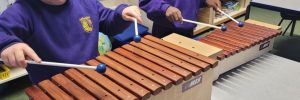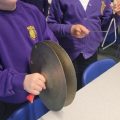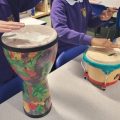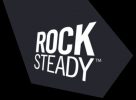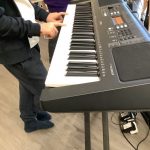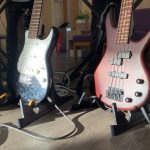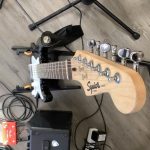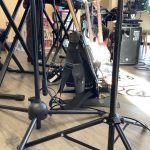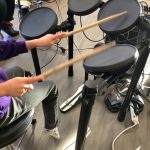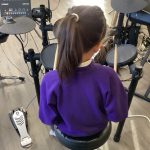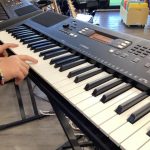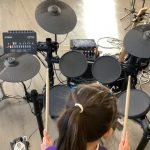Charanga Music
At Oak View, we use the ‘Charanga’ music scheme of work. It provides week-by-week lessons for each year group in the school. The scheme covers a wide range of music with children exploring different genres such as nursery rhymes, classical, blues, jazz, 60’s, 70’s, rock, pop and rap. These genres are explored through fun interactive games, hands-on practical activities along with singing and performing.
In line with the curriculum for music and guidance from Ofsted, this Scheme moves away from the previous levels and learning objective/outcome concepts to a more practical, exploratory and child-led approach to musical learning. Ofsted have stated that “We will not always know the learning outcomes”, so separate and isolated learning objectives at the start of each lesson are not appropriate. Instead the building blocks of music weave through the units to encourage the development of musical skills as the learning progresses through listening and appraising, differing musical activities (including creating and exploring) and performing.
The Building Blocks of Music
All musical learning in this Scheme is built around: pulse, rhythm, pitch, tempo, dynamics, timbre, texture, structure and notation. These aspects are at the centre of all the learning; they are musical building blocks. This is an integrated approach to musical learning where games, the aspects of music, singing and playing instruments are all linked (spiral of learning).
In Charanga Musical School, lessons always begin with pulse as a foundation and with rhythm and pitch as the next two building blocks.
- Pulse – the regular heartbeat of the music, the steady beat.
- Rhythm – long and short sounds or patterns that happen over the pulse, the steady beat.
- Pitch – high and low sounds.
- Tempo – the speed of the music, fast or slow or in-between.
- Dynamics – how loud or quiet music is.
- Timbre – all instruments including voices, have a certain sound quality eg the trumpet has a very different sound quality to the violin.
- Texture – layers of sound. Layers of sound working together make music very interesting to listen to.
- Structure – every piece of music has a structure eg introduction, verse, chorus, ending.
How the Scheme is structured
Each Unit of Work comprises of the strands of musical learning which correspond with the national curriculum for music:
Listening and Appraising
The aim of our Scheme is to engage children and teachers with music and to encourage and grow their love of it. The last thing we want is for them to put music in boxes: “I don’t like classical music” or “I don’t like jazz”. We want them to listen to ALL STYLES and to have informed discussions about that music. Remember that Stevie Wonder and Pharrell Williams are as important within the history of music as Beethoven and Stravinsky. Contextualisation is key to understanding the place of the development of all musical styles within history (see the historical tab on the Listen & Appraise resource). Stravinsky was composing at the same time as Charlie Parker was improvising and composing and they both influenced musical development and each other. As mentioned already, musical learning is not neat or linear. It’s all about internalisation, pulse work, musical language, developing a knowledge of styles of music, forming opinions, confidence building, having fun.
Musical Activities
All activities are based around a song. Musical activities vary from week to week but include:
- Games embed the Interrelated Dimensions of Music through repetition.
- Singing is at the heart of all the musical learning.
- Playing instruments with the song to be learnt – tuned/un-tuned classroom percussion. A sound-before-symbol approach is used but scores are provided as an understanding of notation.
- Improvising with the song using voices and instruments occurs in some Units of Work.
- Composing with the song using instruments occurs in some Units of Work.
Performing
At the end of each lesson children have the opportunity to share what has taken place. The children work towards performing to an audience at the end of the unit of work.
Rocksteady
This year Oak View has joined forces with Rocksteady Music. Children in Key Stage 2 have the opportunity to learn an instrument and be part of a band. Lessons are 30 minutes long and take place in school time with all instruments provided, making it hassle-free for parents. Children can choose from the electric guitar, keyboard, drums or vocals and enjoy playing in a happy, supportive environment with their friends. As a band, children work together to overcome challenges, problem solve and set their own goals. Creating positive learning behaviours to help them progress at school. Learning an instrument develops the part of the brain that deals with behaviour regulation and motor skills, improving children’s focus and progress in class.

